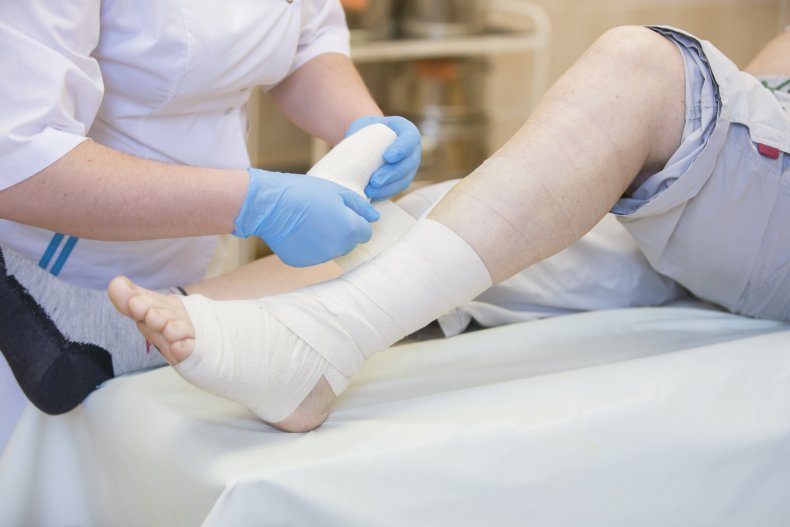Infection
Man’s rare flesh-eating bacterial infection is third documented case ever
A man who contracted a flesh-eating bacterial infection in his right leg found that the infection had spread to his left one as well, a mere four days later.
The 58-year-old man reported to the University Hospital Gregorio Marañon in Madrid, Spain, after experiencing pain and swelling in his right leg. He also had chest pain and a fever, according to a case report published in the journal Acta Biomedica. These are some of the symptoms of necrotizing fasciitis, a flesh-rotting bacterial infection that destroys soft tissue, including fat, connective tissue and muscle.
This is a rare case for a number of reasons. This is the first time that the two species found within the man’s wounds, Streptococcus pyogenes and Staphylococcus aureus, have both been recorded together to be causing necrotizing fasciitis. And this case is the third time ever that multiple sites of infection have appeared across the course of several days.
ISTOCK / GETTY IMAGES PLUS
The authors wrote in the paper: “In most of reported cases of multifocal necrotizing fasciitis, injuries appear synchronously within hours from the initial diagnosis. It is the only third reported case with metachronous lesions, and the first that involves both S. pyogenes and S. aureus. Early diagnosis and multidisciplinary treatment is mandatory to prevent fatal outcomes.”
Necrotizing fasciitis is caused by several species of bacteria, with group A Streptococcus (group A strep) being the most common cause of the infection, according to the Centers for Disease Control and Prevention (CDC). Other bacteria that are often associated with the condition include Vibrio vulnificus, a water-dwelling type that can enter via cuts in the skin from seawater.

ISTOCK / GETTY IMAGES PLUS
Only around 0.4 people per 100,000 are infected to the point of necrotizing fasciitis each year in the U.S. CDC data shows that, since 2010, there were between 700 and 1,150 cases of necrotizing fasciitis caused by group A strep alone in the U.S. every year. Even after treatment, 20 percent of patients would die from the infection.
The man was initially treated for his right leg’s infection using intravenous antibiotics. He also underwent a fasciotomy, which is a limb-saving procedure that relieves tension or pressure to treat specific areas of muscle. The dead or rotten tissue was then removed.
“To prevent the development of metachronous lesions, early multidisciplinary treatment with aggressive and repeated debridement is necessary,” the authors wrote in the paper. Debridement is the removal of dead, damaged or infected tissue.

ISTOCK / GETTY IMAGES PLUS
The same strains of bacteria managed to infect the man’s other leg, however, requiring another operation.
“Four days later, due to rising signs on the left limb, another fasciotomy had to be performed and the same microorganisms were isolated,” the authors wrote.
Thankfully, the man survived both procedures, and recovered fully.
“We managed to keep our patient alive, without amputation or intervention by plastic surgery, and he recovered fully, which is an excellent outcome from a very aggressive disease,” the authors wrote. “Our patient was discharged home one month after his admission and had no complications during the follow-up.”
Do you have a tip on a science story that Newsweek should be covering? Do you have a question about necrotizing fasciitis? Let us know via [email protected].

